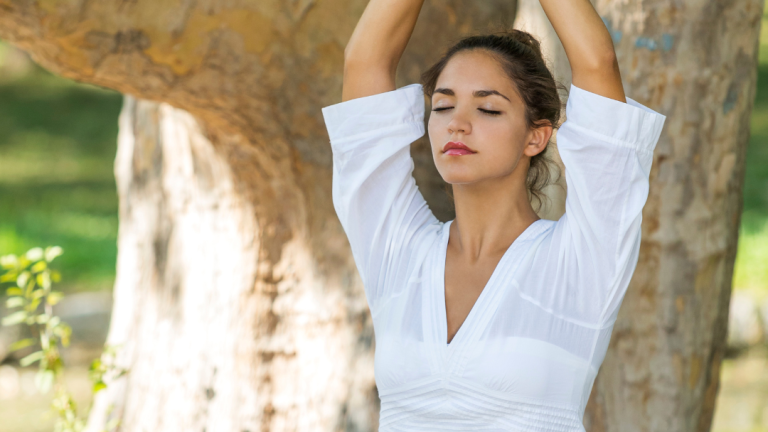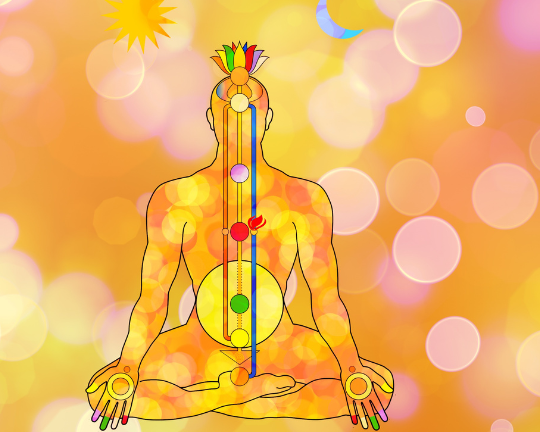
The Magic of Yoga for Flexibility
The Magic of Yoga for Flexibility ,Have you ever wished you could touch your toes without feeling as if you were reaching for the moon? Improving flexibility may appear daunting, but yoga provides a gentle and sustainable way to uncover your body’s potential. Flexibility improves posture, lowers muscle strain, and can even assist prevent injuries.
Table of Contents
In this post, we will look at how yoga can help you expand beyond your limits step by step, while also healing your body and mind. Let us unroll the mat and begin this empowering trip.
Why Does Flexibility Matter?
Flexibility involves more than just bending and stretching. It is all about strengthening your muscles and joints. Enhanced flexibility can:
- Alleviate stiffness and chronic pain.
- Enhance athletic performance.
- Boost your overall mobility and balance.
Yoga is a holistic way to achieve these benefits without putting undue strain on your body.
How Yoga Helps to Improve Flexibility?

- Gradual progression.
Yoga emphasizes consistency over intensity, which makes it ideal for beginners. Slow, steady movements and consistent repetition help your muscles adjust and become more supple over time.
- Connects Breath with Movement.
Deep breathing during yoga helps your muscles relax and stretch more. Ujjayi breathing techniques, for example, allow you to simply deepen your positions.
- Increases strength and flexibility.
Yoga doesn’t merely stretch your muscles; it also strengthens them. Downward Dog and Warrior II are two poses that challenge your flexibility while also building stability.
Best Yoga Poses for Beginners to Improve Flexibility
1. Cat-Cow Stretch (Marjaryasana-Bitilasana)
- It warms up the spine and improves mobility in the back and neck.
- How to do it:
- Start on all fours, with hands under shoulders and knees under hips.
- Inhale, arch your back, lifting your head and tailbone (Cow).
- Exhale, round your back, tucking your chin and pelvis (Cat).
- Repeat for 5–10 breaths.
2. Seated Forward Fold (Paschimottanasana)
- It stretches the hamstrings, lower back, and calves.
- How to do it:
- Sit with legs extended in front of you.
- Inhale, reach your arms up, lengthening your spine.
- Exhale, fold forward, keeping your back straight.
- Hold for 5–8 breaths.
3. Butterfly Pose (Baddha Konasana)
- It opens the hips and stretches the inner thighs.
- How to do it:
- Sit tall with the soles of your feet together, knees falling outward.
- Hold your feet and gently press your knees toward the ground.
- Breathe deeply and hold for 1–2 minutes.
4. Low Lunge (Anjaneyasana)
- It stretches the hip flexors and quads.
- How to do it:
- Start in a lunge position with your back knee on the ground.
- Inhale, lift your chest, and stretch your arms overhead.
- Exhale, sink deeper into the stretch.
- Hold for 5 breaths on each side.
5. Child’s Pose (Balasana)
- It relieves tension in the back, hips, and shoulders.
- How to do it:
- Kneel on the mat and sit back on your heels.
- Stretch your arms forward, lowering your forehead to the mat.
- Breathe deeply for 1–2 minutes.
Personal Story: My Flexibility Transformation
When I first began practicing yoga, I couldn’t even sit cross-legged comfortably. My hamstrings were tight, and my back ached whenever I attempted a forward fold.
I eventually came to the conclusion that yoga isn’t about “achieving” flexibility right away. I started to notice little successes through patience and constant practice, such as getting a little farther in the Seated Forward Fold, feeling my hips loosen up in Butterfly Pose, and having less stiffness in my everyday life. Yoga is now more than simply a means of stretching; it’s a means of celebrating my body’s development and fostering a connection with it.
Tips for Beginners to Enhance Flexibility Through Yoga
1. Be Patient with Your Progress
Flexibility is a journey, not a race. Celebrate small improvements and honor your body’s unique limits.
2. Practice Regularly
Even 10–15 minutes of yoga daily can create noticeable changes over time.
3. Warm Up Before Stretching
Start with gentle movements like Cat-Cow or a few rounds of Sun Salutations to prepare your muscles.
4. Use Props
Yoga blocks, straps, and cushions can support your poses and make stretches more accessible.
5. Focus on Your Breath
Let your breath guide your stretches. Inhale to lengthen and exhale to deepen the pose.
Conclusion
Being flexible means being able to move freely, feeling less constrained, and enjoying the pleasure of having a more open body rather than being able to twist yourself into a pretzel. No matter where you begin, yoga is a rewarding, safe, and sustainable way to increase flexibility.
Key Takeaway: Be kind to your body, show up consistently, and let yoga help you stretch beyond your limits—one pose at a time.
Roll out your mat, take a deep breath, and embrace the journey. Your body will thank you.
References


